Growing cucumbers outdoors: planting features and care tips
When the first warm days come, all summer residents and gardeners go to their plots. After harvesting and preparing the land, the sowing of the first vegetables begins. Usually these are radishes, herbs and, at a constantly warm temperature, cucumbers... These vegetables make up the well-known spring salad. Cucumbers are among the most common fruit plants that are planted in dachas and vegetable gardens.
Content:
- General information about cucumbers
- Varieties for cultivation
- Care Tips
- Reproduction
- Diseases and pests
- Application
General information about cucumbers
Cucumber Is an annual herb that belongs to the pumpkin family. The fruits have a pleasant taste and are eaten in a green state. The plant is a herbaceous bush with curly long stems that are completely covered with small, hard hairs. The length of one liana will burn to be 2-3 meters, they are painted in a light green tone, ribbed, brittle.
Along the entire length of the stem, large, heart-shaped leaves are located on the petioles. Their surface is rough, with pronounced veins, painted in a dark green color. The lower part is covered with coarse hairs and has a lighter tone. The flowers are medium in size, also formed along the entire length of the stem, have 5 petals and are painted in a rich yellow tone.
The fruits of this plant can vary in size depending on the variety.
They are generally medium in size, cylindrical and elongated, green in their immature state. It was during this period that they are removed from the bush and used for food. When mature, a cucumber is 2-3 times larger than green, has a hard skin, which is colored dark yellow or brownish. The pulp of the fruit is tight and juicy, has a pleasant taste.
Varieties for cultivation
Description of the best varieties for open ground:
- Farmer F1. It is a hybrid variety suitable for both greenhouse and outdoor cultivation. Forms a fast-growing bush with a large number of side shoots. This is what makes it especially fruitful. Fruits are medium in size, up to 12 cm in length. It can be planted in early spring, as this variety is adapted to cold weather. It is also resistant to common diseases.
- Evita F1. High-yielding hybrid variety. Resistant to cold, so it can be planted before everyone else. Ripening earlier, the fruits are small. Well suited for canning for the winter. Cucumbers have a pleasant taste, bitterness is completely absent. The variety is resistant to disease.
- Thumb boy. This variety also forms gherkins, the length of which does not exceed 11 cm. The variety is early maturing, ripening already 40 days after planting in the ground. Bushes are vigorous, strong, forming many shoots. The variety is resistant to common diseases for this species.
- Erofei. This variety forms a dense shrub with many side shoots. The fruits are small, their shape resembles an elongated egg, and the length does not exceed 7 cm. Cucumbers have a pleasant taste and are well suited for making salads. The variety is resistant to powdery mildew.
- Masha F1. This is a super early variety.Fruits ripen already 35 days after planting in the ground. Bushes are tall, large, bloom copious, bundle-shaped. The yield is high and long lasting. The fruits are cylindrical, small in size, the surface is densely covered with pimples. The pulp is tight and juicy, has a pleasant taste, there is no bitterness. The variety is unpretentious in care and resistant to diseases.
- The fontanelle F1. A variety of medium ripening. Bushes are large, strong, branching weakly. The fruit is medium in size, cylindrical in shape, up to 12 cm long. The skin is covered with sparse tubercles. The fruit has a pleasant taste, there is no bitterness. Suitable for salting and preservation for the winter. The variety is resistant to some diseases.
Care Tips
Before planting cucumbers in open ground, you must choose the right place and prepare the soil. In the autumn, it is recommended to add humus to the soil and dig it up. Cucumbers They react poorly to acidic soils, therefore, for good growth and development of the plant, lime must be added to it.
The landing site should be well lit and warm by the sun.
For good growth and development, cucumbers need an ambient temperature of 19-26 degrees. Therefore, they are grown mainly in warm regions. Moisture-loving cucumbers do not tolerate stagnant water well, so the soil must be well-drained.
Proper care of cucumbers:
- Watering produced as needed, increases during dry periods and decreases during heavy rains.
- The first loosening of the soil is carried out only when the bushes have formed and strengthened root system... At an earlier date, there is a risk of damaging the plant.
- Weeding and weeding are recommended 3 times a month.
In order for the plant to develop well and bring a good harvest, the bushes must be formed. For this, the apical shoots that grow above the fourth leaf are removed from an adult plant. This stimulates the growth of the lateral stems on which the ovaries form. As a result, more fruits can be harvested from one bush.
Cucumber stalks are constantly growing, so they need to be tied up, spreading on both sides of the plant.
You can also lower the tops to the ground and dig in, after a while they form roots, which will give the bush additional nutrition. Top dressing is recommended 2 times a month with organic and mineral fertilizers... They are introduced together with watering or before it, so that nutrients along with water enter the soil. If the roots of the bush are bare after constant watering, they must be sprinkled with soil again.
Fruit picking:
- Gardeners recommend harvesting in the morning, when the sun has not yet had time to heat the fruit. In this case, they remain tight and juicy for a long time.
- You can remove from the bush with a sharp knife or gently tear off cucumberbreaking the stalk so as not to damage the fruit. The disadvantage of the stems of this plant is that they break easily with any sudden movement. So during harvesting, the branches rise and are viewed neatly.
- Cucumbers can be stored at a temperature of 7-10 degrees for 14-15 days, after which they begin to wilt and lose their presentation and taste. During harvesting, it is recommended to remove damaged and diseased fruits from the bush, as they take on some of the nutrients that can go to healthy ovaries.
Reproduction
Cucumbers are propagated using seed, which are harvested from well-ripened fruits. They can also be purchased at gardening stores to introduce a new variety. But basically, all gardeners prefer to collect their seeds in order to get the fruits they like in the next harvest.
Seed preparation for planting:
- To collect the starting material, a large cucumber is selected and left on the bush until fully ripe. This will be seen by the well-yellowed skin of the fruit.
- At that time the seeds ripen well and gain strength.They are carefully removed by cutting the cucumber in half, washed and dried, and then placed in a dry, cool place for storage.
- In the spring, the seeds can be treated with a stimulating and disinfectant solution, and then soaked for a day before sowing.
- Planting can be done outdoors or grown seedlings at home.
In the first case, it is necessary to prepare the beds. They are made in different ways: small holes staggered for creeping cultivation, or long, shallow grooves that are located under the trellis for tying the stems. The soil is preliminarily watered and loosened. When planting in a groove, the seeds are spread at a distance of 5 cm from each other, in the holes they are placed in 4-5 pieces. When germinating more than necessary, the number of shoots, the excess can be transplanted carefully, removing it along with a small earthen clod.
For seedlings, seeds are prepared and planted in April, so that by the time the soil warms and warms up, the cucumbers reach 10-15 cm and strengthen the root system.
To do this, you must first prepare the substrate. It is made by mixing peat, humus and sawdust in equal proportions, adding a little ash. The resulting mixture is placed in small cups, you can use peat ones, this will greatly simplify planting in open ground.
1-2 seeds are sown in each cup. After that, the containers are placed in a warm and well-lit place. The ambient temperature should be between 19-21 degrees during the daytime and 14-15 at night. It is recommended to regularly ventilate the room with increased heat so that young sprouts do not wilted. They need to be watered once every 5-7 days with warm soft water at room temperature. In a month, the seedlings will be ready.
Diseases and pests
Cucumbers are a favorite habitat for aphids, spider mites and whiteflies. They are mainly found in places where there is high humidity and dampness.
Therefore, it is necessary to regularly monitor the amount of moisture supplied to the soil, as well as remove weeds so that it does not form dense thickets. There should be sufficient ventilation between the rows of cucumbers.
For prophylaxis against pests in the spring, it is necessary to apply special biological products to young bushes by spraying.
Many hybrid varieties are resistant to the most common diseases in melons. To prevent the appearance of ailments such as powdery mildew or bacteriosis, it is recommended to treat the bushes with special solutions or drugs.
Application
Cucumbers mainly used in cooking. They are great for salads and appetizers. They are also canned for the winter. They have many beneficial substances, minerals and trace elements.
Growing cucumbers is a common thing for every gardener. Every year, breeders provide new interesting varieties. Growing them on your own plot is quite simple and enjoyable. With proper care, you can not only use your product all season, but also stock up on the winter.
More information can be found in the video.



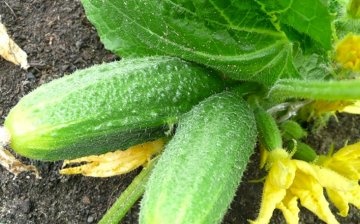
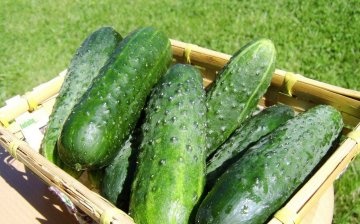
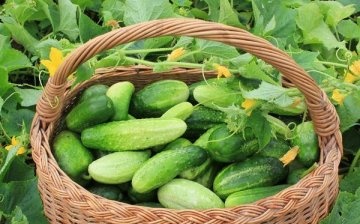
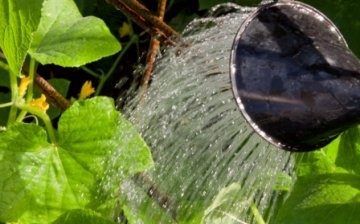
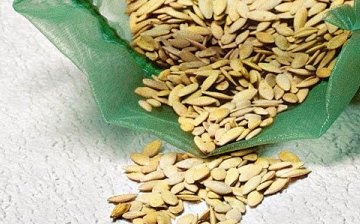
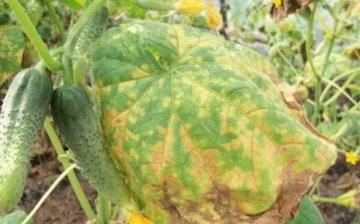
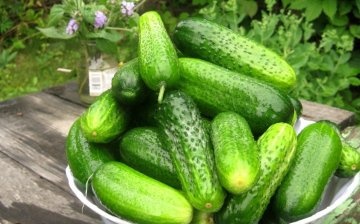







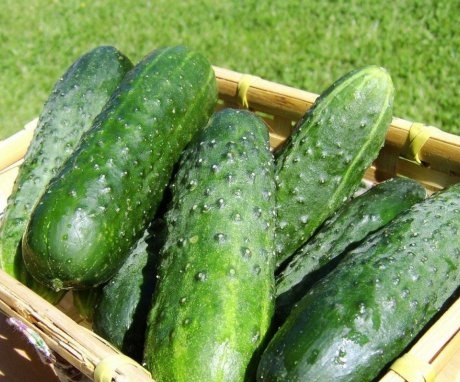

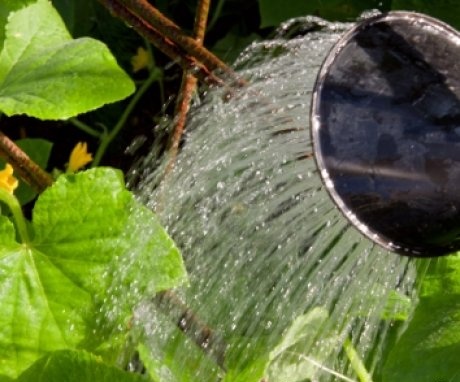
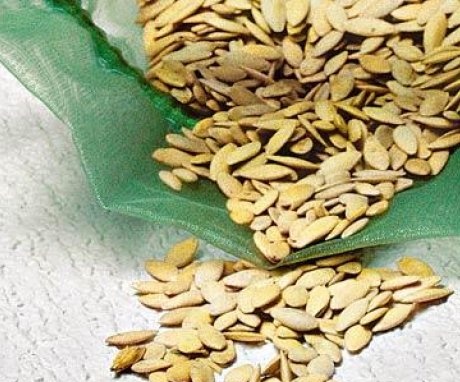
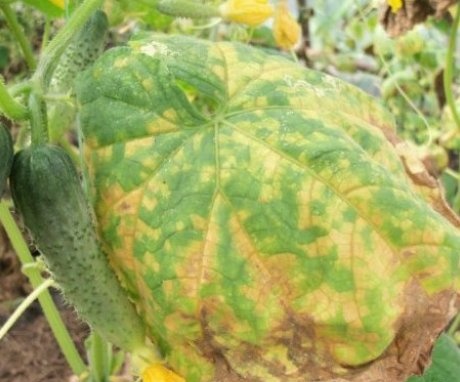
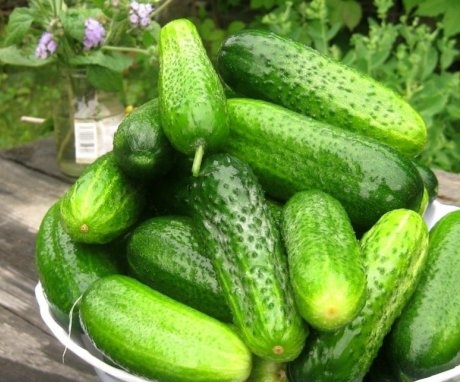
Cucumbers, unlike tomatoes, are not so picky, they are much easier to grow than other vegetables. Of course, watering and appropriate care are definitely needed, self-pollinating varieties are pleasant.